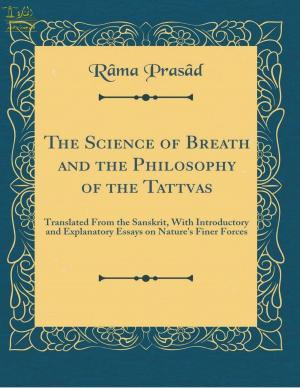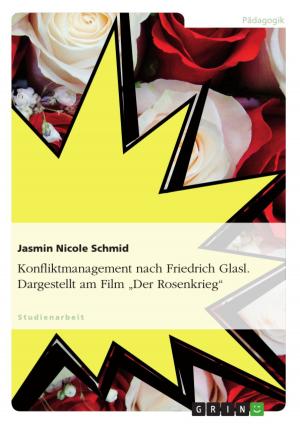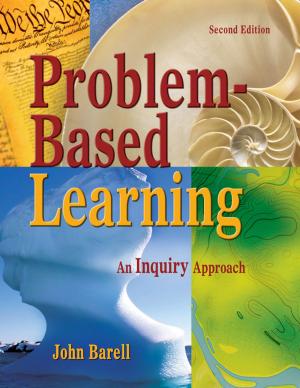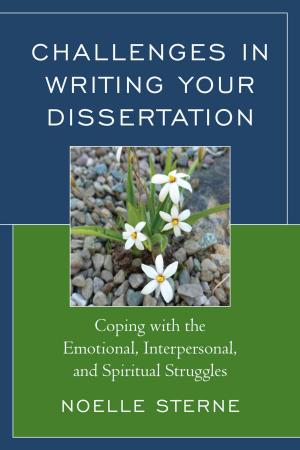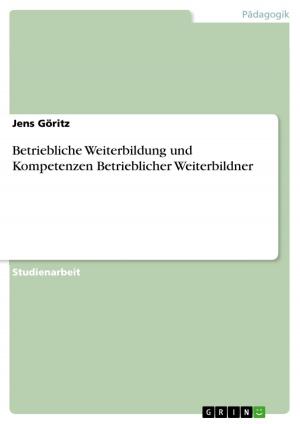Learning and Curriculum in Technology Education: A Design and Visual Communication Perspective.
Nonfiction, Art & Architecture, Architecture, Home & Garden, The Home, Reference & Language, Education & Teaching, Educational Theory| Author: | William Van Zyl | ISBN: | 9780473452353 |
| Publisher: | Five House Publishing | Publication: | August 22, 2018 |
| Imprint: | Language: | English |
| Author: | William Van Zyl |
| ISBN: | 9780473452353 |
| Publisher: | Five House Publishing |
| Publication: | August 22, 2018 |
| Imprint: | |
| Language: | English |
Introduction:
In this position paper, I will look at some of the important issues regarding the theorising of knowledge, concepts of knowledge, knowledge differentiation and the New Zealand Technology Curriculum. I will explore some ideas related to situated cognition and the construction of knowledge. I will then move on and focus on some issues related to the generality of learning and the context -dependency of learning. In the fourth place, we will look at curriculum theory about developing Technology Curricula. Lastly, we will explore the implications for Technology education in New Zealand based on different global Technology Curricula perspectives. I will use my own experience as a Technology teacher (Design and Visual Communication-secondary school) to evaluate and critique curriculum matters as I interpret them. Also, after completing the paper, I ask a relevant practical question, and I endeavour to answer it by providing a typical Design and Visual Communication design brief for secondary school students (17-year-olds):
"So, what could a typical design brief look like?"
From a Design and Visual Communication (DVC – New Zealand Context).
Background to the academic paper: APA Referencing
Here follows a typical architectural design brief for 17-year old students.
Situation 1: You are a famous architect and you are contracted by a specific country to design a unique sustainable Art Science Museum. The brief includes the incorporation of the country's culture, the symbolism, the technology, the art, the science, the engineering, the values and history of that particular country.
Brief 1: Design a unique sustainable Art Science Museum for any country of your choice.
Situation 2: You have completed your design and presentations (portfolio) of the solution of your sustainable Art Science Museum design and you are offered the opportunity to showcase your design work in one of the local museums. A room is given to you with the freedom to display your work as you wish (no limitations). The size of the room is 10 m x 10 m =100 square metre. With an entrance and exit -2 x arch openings. You have all the museum facilities and equipment at your disposal. For example, data projector, and state of the art computer with all the apps/software you want. Display frames/shelves/tables/pedestals/cabinets, etc. You also have the freedom to have your work printed, enlarged, and mounted at a local print/copy shop. It also includes the opportunity to create your own website. Search the internet for more ideas before you endeavour your planning/ design/layout of the exhibition/display. Obviously, you will start with research and then move on to freehand sketching (generate ideas, ideation, and concepts for the display). Use this opportunity to creatively link your display to the website, to showcase and market your design ideas.
Brief 2: Plan and design a display of your completed design work (Art Science Museum) at a local museum. Create a simple website with menus that includes all the basic information and links to your design work. For example, your exhibition/display locally at the Waikato Museum—New Zealand. In other words, it is the overall plan which includes: Room layout, the position of detailed displays, media used, annotated freehand sketches, work drawings, 3-d model display, on-screen presentation (data projector), pamphlets, website details, and so on. See the Waikato Museum in New Zealand, for a specific local museum, if you choose the Waikato region.
Word Count = 9524
Pages = 63
Some APA Referencing included
Introduction:
In this position paper, I will look at some of the important issues regarding the theorising of knowledge, concepts of knowledge, knowledge differentiation and the New Zealand Technology Curriculum. I will explore some ideas related to situated cognition and the construction of knowledge. I will then move on and focus on some issues related to the generality of learning and the context -dependency of learning. In the fourth place, we will look at curriculum theory about developing Technology Curricula. Lastly, we will explore the implications for Technology education in New Zealand based on different global Technology Curricula perspectives. I will use my own experience as a Technology teacher (Design and Visual Communication-secondary school) to evaluate and critique curriculum matters as I interpret them. Also, after completing the paper, I ask a relevant practical question, and I endeavour to answer it by providing a typical Design and Visual Communication design brief for secondary school students (17-year-olds):
"So, what could a typical design brief look like?"
From a Design and Visual Communication (DVC – New Zealand Context).
Background to the academic paper: APA Referencing
Here follows a typical architectural design brief for 17-year old students.
Situation 1: You are a famous architect and you are contracted by a specific country to design a unique sustainable Art Science Museum. The brief includes the incorporation of the country's culture, the symbolism, the technology, the art, the science, the engineering, the values and history of that particular country.
Brief 1: Design a unique sustainable Art Science Museum for any country of your choice.
Situation 2: You have completed your design and presentations (portfolio) of the solution of your sustainable Art Science Museum design and you are offered the opportunity to showcase your design work in one of the local museums. A room is given to you with the freedom to display your work as you wish (no limitations). The size of the room is 10 m x 10 m =100 square metre. With an entrance and exit -2 x arch openings. You have all the museum facilities and equipment at your disposal. For example, data projector, and state of the art computer with all the apps/software you want. Display frames/shelves/tables/pedestals/cabinets, etc. You also have the freedom to have your work printed, enlarged, and mounted at a local print/copy shop. It also includes the opportunity to create your own website. Search the internet for more ideas before you endeavour your planning/ design/layout of the exhibition/display. Obviously, you will start with research and then move on to freehand sketching (generate ideas, ideation, and concepts for the display). Use this opportunity to creatively link your display to the website, to showcase and market your design ideas.
Brief 2: Plan and design a display of your completed design work (Art Science Museum) at a local museum. Create a simple website with menus that includes all the basic information and links to your design work. For example, your exhibition/display locally at the Waikato Museum—New Zealand. In other words, it is the overall plan which includes: Room layout, the position of detailed displays, media used, annotated freehand sketches, work drawings, 3-d model display, on-screen presentation (data projector), pamphlets, website details, and so on. See the Waikato Museum in New Zealand, for a specific local museum, if you choose the Waikato region.
Word Count = 9524
Pages = 63
Some APA Referencing included



